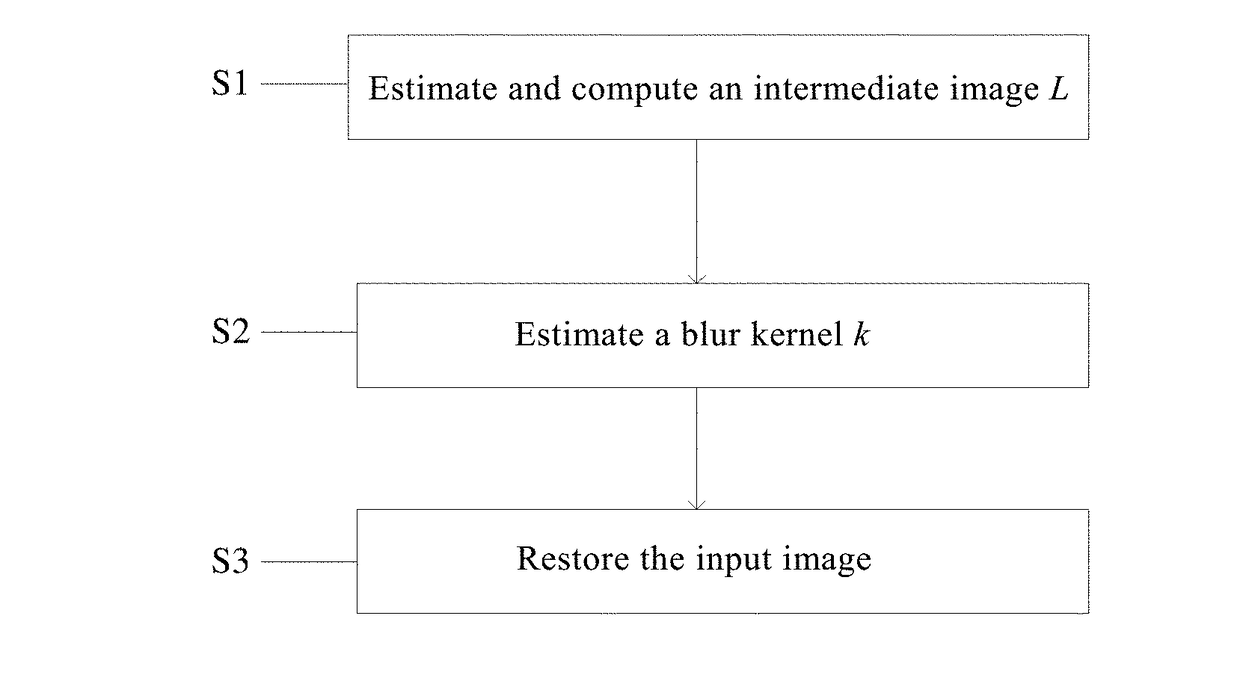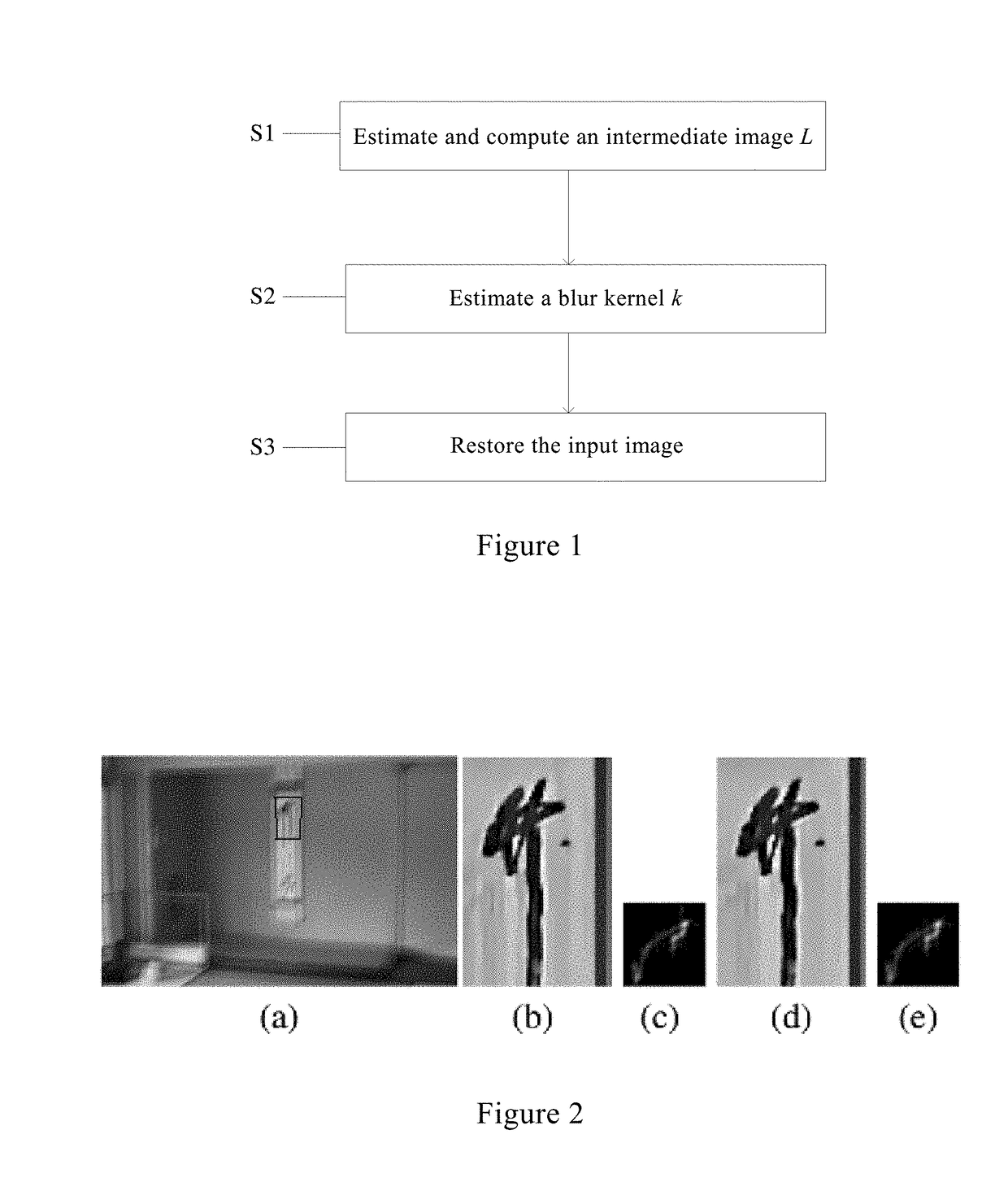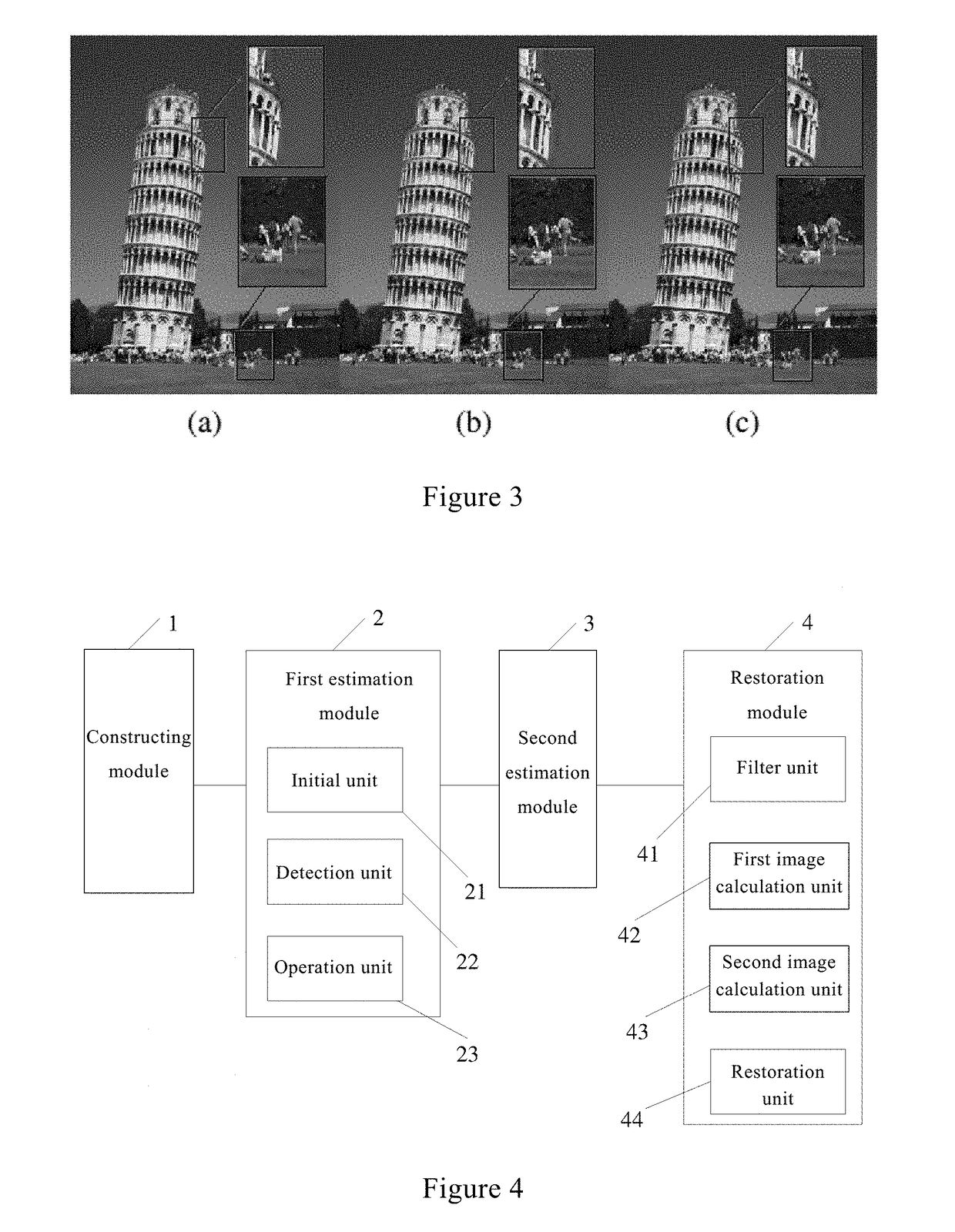Method and system for image de-blurring
a technology of image deblurring and image enhancement, applied in image enhancement, image analysis, instruments, etc., can solve the problems of large-scale ill-posed inverse problems, affecting the accuracy of blur kernel k estimation, and often suffering motion blur in images taken. , to achieve the effect of eliminating noise and ringing artifacts of the smooth region and more accurate blur kernel estimation
- Summary
- Abstract
- Description
- Claims
- Application Information
AI Technical Summary
Benefits of technology
Problems solved by technology
Method used
Image
Examples
Embodiment Construction
[0022]In some embodiments, a single image is de-blurred, mainly including blur kernel k estimation and image restoration. A robust constraint I used impose constraints on the blur kernel k estimation and intermediate image L restoration to obtain an accurate blur kernel k and a high-quality restored image.
[0023]A method for image de-blurring is provided in the present example, with its flowchart shown in FIG. 1, comprising the steps of:
[0024]S1: Estimating and Computing an Intermediate Image L.
[0025]An image pyramid is constructed before estimating the intermediate image L. In particular, an image pyramid corresponding to the input image is constructed. The input image is the original blurred image I, wherein the image pyramid is a structure that describes the image in multiple resolutions. An image pyramid is an image set with a series of gradually reduced resolutions, in a pyramid form. Thus, the image pyramid model in the present embodiment is an image set of blurred images I wit...
PUM
 Login to View More
Login to View More Abstract
Description
Claims
Application Information
 Login to View More
Login to View More - R&D
- Intellectual Property
- Life Sciences
- Materials
- Tech Scout
- Unparalleled Data Quality
- Higher Quality Content
- 60% Fewer Hallucinations
Browse by: Latest US Patents, China's latest patents, Technical Efficacy Thesaurus, Application Domain, Technology Topic, Popular Technical Reports.
© 2025 PatSnap. All rights reserved.Legal|Privacy policy|Modern Slavery Act Transparency Statement|Sitemap|About US| Contact US: help@patsnap.com



